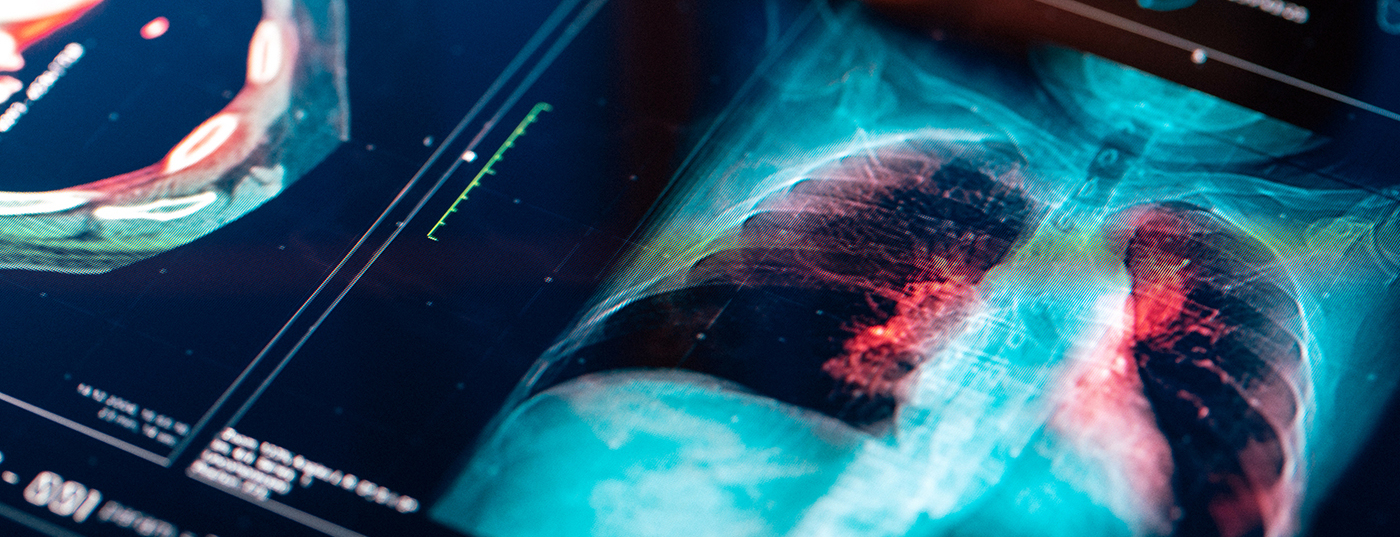At Tübingen University Hospital, a preclinical study led by Dr. Clemens Hinterleitner and Prof. Dr. Lars Zender, Medical Director of Medical Oncology and Pneumology, led to extremely promising results. The research group was able to develop a new methodology to better predict the likelihood of success of immunotherapies for lung cancer. The new study with the original title “Platelet PD-L1 reflects collective intratumoral PD-L1 expression and predicts immunotherapy response in non-small cell lung cancer” has recently been published in the renowned scientific journal “Nature Communications”.
With 1.8 million deaths per year, lung cancer is one of the most common and deadly cancers worldwide. In Germany alone, around 45,000 people died from the disease in 2019. With innovative cancer therapies such as so-called “checkpoint inhibitor-based” immunotherapies, the treatment options for lung tumors have improved in recent years. These treatments are based on blocking specific signaling pathways within our immune system, thereby provoking a defensive response against tumor cells. These checkpoints are based on so-called surface receptors and molecules, such as PD-1 or PD-L1. Through specific antibody-mediated inhibition of these molecules, the immune system recognizes the tumor as an enemy and attacks it. Thanks to this therapy concept, a containment of the cancer can be achieved in about 20 percent of all lung tumor patients.
“Despite this success, to date there is no easily applicable method to predict which patients will respond to immunotherapy,” explains Dr. Clemens Hinterleitner. Not every affected person responds equally well to the therapy, undesirable side effects can occur, and immunotherapy is extremely cost-intensive. The development of the new process is therefore all the more gratifying. “We found that platelets, blood cells that come into contact with the tumor cell, take up the molecule PD-L1. Our study was able to show that the amount of PD-L1-loaded platelets is a very good indicator of whether immunotherapy with PD-1 or PD-L1 blocking antibodies in lung tumors is promising or not,” says Dr. Hinterleitner.
The presence of PD-L1 on the tumor cell is one of the basic requirements for the successful use of immunotherapy with PD-1 or PD-L1 blocking antibodies. Before immunotherapy is even considered, blood is drawn from patients with a lung tumor. The laboratory then determines whether sufficient PD-L1 molecules are present on the surface of the platelets in order to better assess whether cancer immunotherapy is promising in the present case.
“Platelets circulate through our bloodstream thousands of times a day and inevitably come into contact with any tumor cells that may be present. By taking up the molecule PD-L1, they are particularly well suited as a biomarker that can predict the response of a checkpoint inhibitor therapy extremely validly,” adds Prof. Dr. Lars Zender. Although there are already methods to predict a response of immunotherapy, such as the so-called immunohistochemical staining. Here, a biopsy of the tumor is taken and staining of cell or tissue structures with dyes coupled to antibodies is performed. A very specific property of the tissue then triggers an antigen-antibody reaction. “The problem with studies on biopsy material, however, is that tumors are very heterogeneous and that a single biopsy does not adequately reflect the totality of the tumor. Compared to existing immunohistochemical methods, the methodology using platelets has a much better predictability,” Prof. Zender explains the difference.
With the iFIT Cluster of Excellence, the only oncological cluster of excellence in Germany, and the appointment of Tübingen as a new site in the National Center for Tumor Diseases (NCT), optimal conditions are available to further investigate these promising findings and validate them in a multicenter study.
Original publication:
DOI: 10.1038/s41467-021-27303-7
The publication is available at the following link: https://www.nature.com/articles/s41467-021-27303-7












